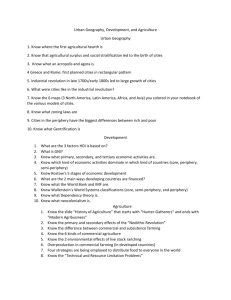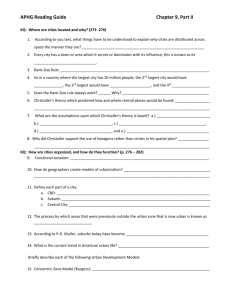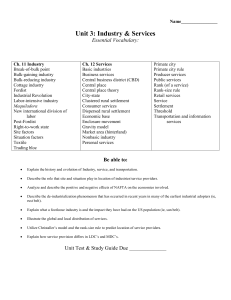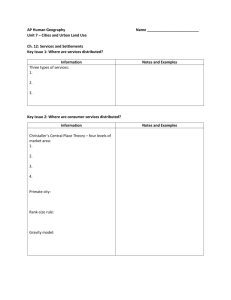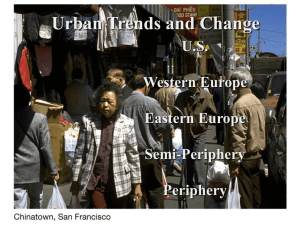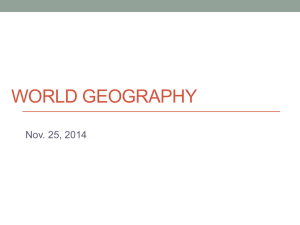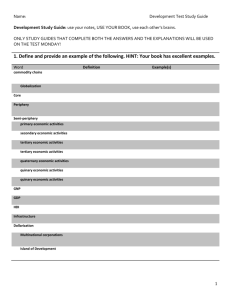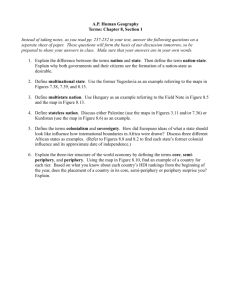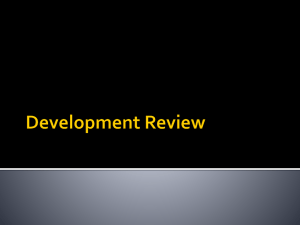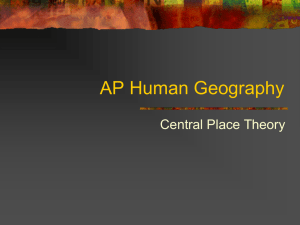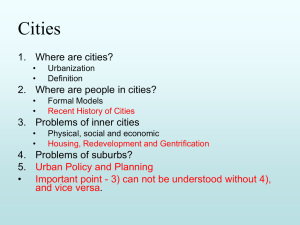Reading Guide - Mrs. Silvius's Classes
advertisement
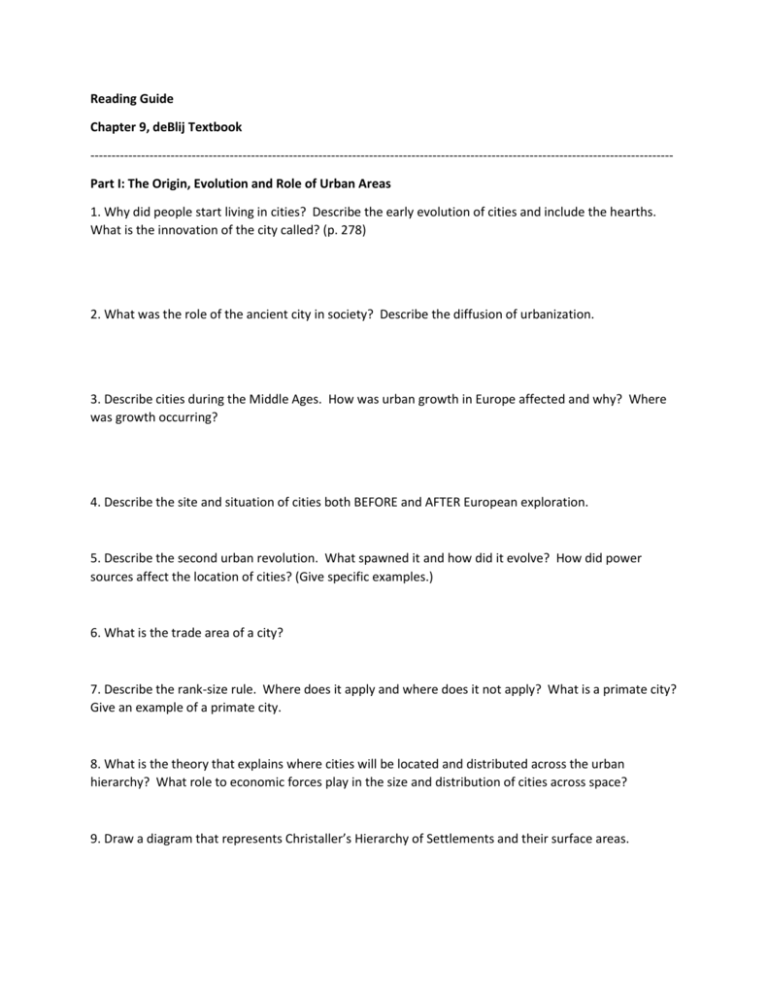
Reading Guide Chapter 9, deBlij Textbook -----------------------------------------------------------------------------------------------------------------------------------------Part I: The Origin, Evolution and Role of Urban Areas 1. Why did people start living in cities? Describe the early evolution of cities and include the hearths. What is the innovation of the city called? (p. 278) 2. What was the role of the ancient city in society? Describe the diffusion of urbanization. 3. Describe cities during the Middle Ages. How was urban growth in Europe affected and why? Where was growth occurring? 4. Describe the site and situation of cities both BEFORE and AFTER European exploration. 5. Describe the second urban revolution. What spawned it and how did it evolve? How did power sources affect the location of cities? (Give specific examples.) 6. What is the trade area of a city? 7. Describe the rank-size rule. Where does it apply and where does it not apply? What is a primate city? Give an example of a primate city. 8. What is the theory that explains where cities will be located and distributed across the urban hierarchy? What role to economic forces play in the size and distribution of cities across space? 9. Draw a diagram that represents Christaller’s Hierarchy of Settlements and their surface areas. 10. What realities cause Christaller’s assumptions to not be met in reality? 11. Relate Central Place Theory to the Sunbelt phenomenon of the past four decades. Part II: How are cities organized? How do they function? 12. What is functional zonation? 13. What is the key economic zone of the city as defined by most geographic models? 14. Give the definition of suburbanization provided on page 294. 15. Compare and contrast the Burgess Model, the Sector Model, the Multiple Nuclei Model and the Urban Realms. Include diagrams of all three models here. Be sure to note that these are models of North American Cities. Also, include all names to go with each model and dates since these show the changes in the layouts of U.S. cities over time. 16. What is a megacity? Where are most of the megacities in the world (generalization)? List three. 17. What mode describes the structure of Latin American cities? Describe it and draw it or cut and paste the model here. 18. How do African cities differ from Latin American cities? 19. Now describe sub-Saharan African cities and include a drawing of the model. 20. Describe Southeast Asian cities. Include the model here. What is the focal point of these cities? Where is the CBD? How did colonization and migration affect the and uses in Southeast Asian cities? 21. What are Shantytowns? Name three cities that have them on three different continents. How does the absence of zoning laws affect the structure of cities on the global periphery? 22. Describe Redlining, Blockbusting and Gentrification. How is gentrification affecting residents of Over-the-Rhine? (specific ways, not generalizations). 23. What is New Urbanism and how is it a reaction to urban sprawl? 24. What are the objectives behind gated communities? Where might you see them? 25. Who typically lives in the ethnic neighborhoods in European cities? How do European cities differ from American cities in this regard, and why? 26. How do colonial patterns affect relationships among the ethnic components of cities in the global periphery and semi-periphery? 27. What are World Cities and how do they function at the global scale? What cities are on most lists of World Cities? 28. What are spaces of consumption? What are festival spaces? 29. Make sure you add to these notes the information from class about NIMBY, LULU’s, Hermit Crabs and Boomburgs. I am not making these things up, I swear!
